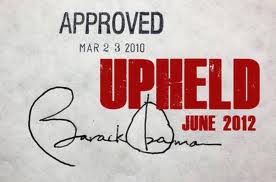Harris County is at ground zero for this national effort.
With less than two months remaining to enroll in the health care marketplace, the federal government is focusing outreach efforts on areas with the largest concentrations of uninsured, including Texas’ Harris and Dallas counties.
According to a study conducted for The Associated Press, half of the nation’s uninsured live in just 113 of the 3,143 counties. Texas has the highest uninsured rate in the U.S. – about 1 in 4 people – and the two biggest concentrations in Texas are Harris and Dallas counties. That sort of data are what brought U.S. Health and Human Services Secretary Kathleen Sebelius to Dallas last week and why the agency is coordinating with Houston health officials on advertising aimed at spreading the enrollment message.
Martha Blaine, executive director of the Community Council of Greater Dallas, said Texas’ refusal to expand Medicaid is the main factor.
“I think the other reason that we’re not making the headway against the uninsured in Texas is that … with the federal exchange Texas did not receive any of the outreach money. And so we do not have high-profile outreach programs like California has,” Blaine said. “The general public does not have a unified message in Texas.”
Federal officials have identified 25 key metro areas to focus on before the March 31 end of open enrollment, including Dallas and Houston; South Florida and Orlando; the northern New Jersey megalopolis; Phoenix and Tucson; Detroit and Cleveland; Atlanta and Nashville. In mid-January, federal officials reported more than 118,500 Texans had used the health care web site to sign up for insurance.
To some extent, saying that “half of the nation’s uninsured live in just 113 counties” is functionally the same as saying a lot of people live in these counties. By my count, the 100 most populous counties in the US contain more than 40% of the total population, so having half the uninsured population in the top 113 seems right in line with that. On the plus side, having so many of them concentrated in a small number of places makes outreach easier. On the other hand, as Joan McCarter notes, the biggest of these big counties are mostly in states like Texas that didn’t expand Medicaid, which puts a lot of people into the coverage gap, and which are most subject to the resistance/sabotage efforts of their state governments. The people and groups doing the outreach have their work cut out for them.
In Austin, a coalition of activists launched on Wednesday a bilingual campaign to spotlight stories from Texans who cannot afford health care insurance because of the state’s refusal to expand Medicaid coverage to low-income adults under the Affordable Care Act.
The initiative, dubbed “Texas Left Me Out,” is being spearheaded by more than 40 health care and community advocacy groups. The activist coalition has set up websites in English and Spanish and a phone line to collect stories from uninsured Texans about their experiences.
The group also said it planned to deliver letters to the offices of every member of the Legislature in an effort to convince state lawmakers “that this problem needs to be fixed and it needs to be fixed as quickly as possible,” said Sister JT Dwye, of the Catholic Church-affiliated Seton Healthcare Family.
I’ve noted the efforts of Texas Left Me Out before. They’re as much about winning elections as anything else, because we won’t be able to make sufficient gains on this problem until the nature of our government changes. Another tough job, but it’s got to be done. Check out the Texas Left Me Out and do what you can to get involved.

